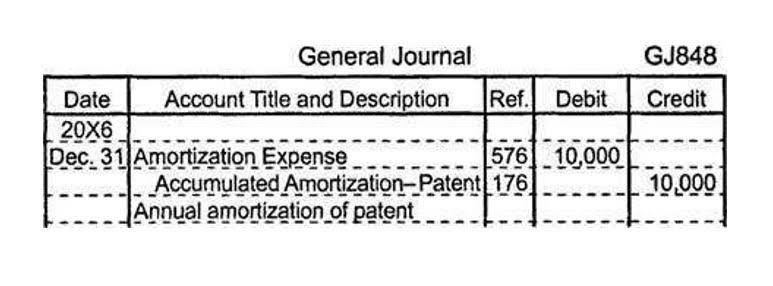
For instance, if an asset’s straight-line rate is 10%, the DDB rate would be 20%. This accelerated rate reflects the asset’s more rapid loss of value in the early years. The DDB method offers several advantages, particularly for businesses with assets that depreciate quickly. By Coffee Shop Accounting prioritizing higher depreciation in the early years, it aligns financial records with real-world asset usage and delivers multiple benefits. 1- You can’t use double declining depreciation the full length of an asset’s useful life. Since it always charges a percentage on the base value, there will always be leftovers.
Step 4: Compute Final Year Depreciation Expense

The higher depreciation in earlier years matches the fixed asset’s ability to perform at optimum efficiency, while lower depreciation in later years matches higher maintenance costs. It’s ideal to have accounting software that can calculate depreciation automatically. Accelerated depreciation is any method of depreciation used for accounting or income tax purposes that allows greater depreciation expenses in the early years of the life of an asset. Accelerated depreciation methods, such as double declining balance (DDB), means there will be higher depreciation expenses in the first few years and lower expenses as the asset ages.

Step 2: Determine the straight line depreciation rate
We’ll explore what the double declining balance method is, how to calculate it, and how it stacks up against the more traditional Straight Line Depreciation method. By the end of this guide, you’ll be equipped to make informed decisions about asset depreciation for your business. A double-declining balance depreciation method double declining balance method is an accelerated depreciation method that can be used to depreciate the asset’s value over the useful life. It is a bit more complex than the straight-line method of depreciation but is useful for deferring tax payments and maintaining low profitability in the early years. One of the reasons DDB is considered an accelerated depreciation method is its focus on aligning expenses with the asset’s performance and value.
The Double Declining Balance Method has several advantages:

The articles and research support materials available on this site are educational and are not intended to be investment or tax advice. All such information is provided solely for convenience purposes only and all users thereof should be guided accordingly. Note that the double-declining multiplier yields a depreciation expense for only four years.
Businesses use accelerated methods when having assets that are more productive in their early years such as vehicles or other assets that lose their value quickly. The latter two are considered accelerated depreciation methods because they can be used by a company to claim greater depreciation expense in the early years of the asset’s useful life. At the end of an asset’s useful life, the total accumulated depreciation adds up to the same amount under all depreciation methods.
- We take monthly bookkeeping off your plate and deliver you your financial statements by the 15th or 20th of each month.
- This approach ensures that depreciation expense is directly tied to an asset’s production or usage levels.
- Since it always charges a percentage on the base value, there will always be leftovers.
- The Double Declining Balance Method, often referred to as the DDB method, is a commonly used accounting technique to calculate the depreciation of an asset.
- Someone on our team will connect you with a financial professional in our network holding the correct designation and expertise.
- Bottom line—calculating depreciation with the double declining balance method is more complicated than using straight line depreciation.
Download our Sample Ecommerce Financial Reports
- The depreciation expense calculated by the double declining balance method may, therefore, be greater or less than the units of output method in any given year.
- FitBuilders estimates that the residual or salvage value at the end of the fixed asset’s life is $1,250.
- This results in a steep decline in value in the first few years, tapering off over time.
- This approach helps businesses calculate how much value their assets lose over time.
- This article is a must-read for anyone looking to understand and effectively apply the DDB method.
Bottom line—calculating depreciation with the double declining balance method is more complicated than using straight line depreciation. And if it’s your first time filing with this method, you may want to talk to an accountant to make sure you don’t make any costly mistakes. The Sum-of-the-Years’ Digits Method also falls into the category of accelerated depreciation methods. It involves more complex calculations but is more accurate than the Double Declining Balance Method in representing an asset’s wear and tear pattern. This method balances between the Double Declining Balance and Straight-Line methods and may be preferred for certain assets. In summary, understanding double declining balance depreciation is crucial for making informed financial decisions.
Formula
What it paid to acquire the asset — to some ultimate salvage value over a set period of years (considered the useful life of the asset). By reducing the value of that asset on the company’s books, a business can claim tax deductions each year for the presumed lost value of the asset over that year. To income summary use the template above, all you need to do is modify the cells in blue, and Excel will automatically generate a depreciation schedule for you. If you need expert bookkeeping assistance, Bench can help you get your books in order while you focus on what’s important for your business. DDB is ideal for assets that very rapidly lose their values or quickly become obsolete. This may be true with certain computer equipment, mobile devices, and other high-tech items, which are generally useful earlier on but become less so as newer models are brought to market.
Calculating the annual depreciation expense under DDB involves a few steps. First, determine the asset’s initial cost, its estimated salvage value at the end of its useful life, and its useful life span. Then, calculate the straight-line depreciation rate and double it to find the DDB rate. Multiply this rate by the asset’s book value at the beginning of each year to find that year’s depreciation expense.

